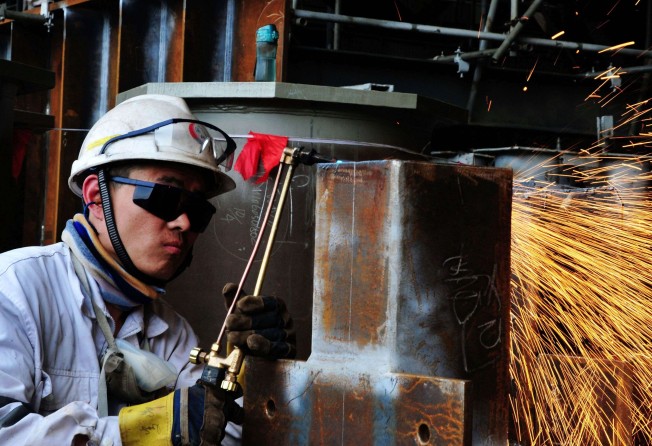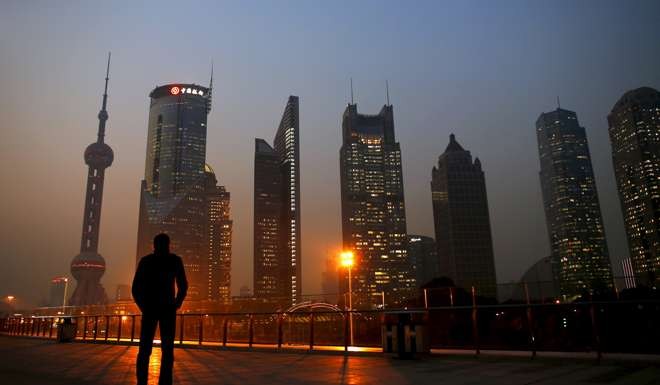Sellers of China’s bad debt prove to be picky shoppers
More attractive real estate debts are being bought while harder to process debt in the manufacturing sector is left on the shelf

China’s asset management companies are starting to make greater progress when it comes to dealing with companies’ non-performing loans (NPLs), but observers say it is the easier bad debts that have been processed so far, with the more difficult ones yet to come.
There are four large asset management companies, Cinda, Huarong, Orient and Great Wall, which were set up in 1999 to process soured loans in China’s last round of dealing with bad debt, as well as multiple regional players who were set up more recently, primarily to buy and process debts from local governments and local banks.
According to estimates from Japanese bank Nomura, the total outstanding balance of bad loans bought by asset management companies reached about 190 billion yuan at the end of 2015, and 246 billion yuan by the end of June this year. While this is rapid growth, it suggests that net purchases of non-performing loans by asset management companies was only about 20 per cent of the net bad-loan increase each year at banks.
Furthermore, those loans are in industries that are easier to sell.
“The large asset management companies are trying to do the easier deals, which are often in the real estate sector,” said Mac Liang, a manager at distressed financing specialist Alvarez and Marsal in Shanghai, speaking on the phone from a project in Heilongjiang.
“While about half of the outstanding NPLs are in the manufacturing sector, the proportion of manufacturing NPLs purchased by the asset management companies is much lower.”
The reason, Liang says, is that property companies generally provide land as security which can be handed over if the loan is unpaid, whereas the situation for a manufacturing company is more difficult to process.
Liang also says a further challenge for asset management companies when dealing with distressed manufacturing companies is that “[asset management companies], particularly local [ones] can face pressure from local government if they try to foreclose a factory”.
Local governments will be trying to avoid significant unemployment both for its own sake, and because of social instability fears.
The Nomura analysts led by Sophie Jiang argue that another reason why the asset managers did not seem to acquire NPLs aggressively despite the rising supply was because of their pricing. They estimate that companies have been paying about 30 per cent of the face value of the distressed assets.
There is demand for Chinese non-performing loans from a range of actors not just asset management companies and Randall Arthur, a lawyer at Kobre and Kim in Hong Kong, says that he has seen interest from a number of overseas-based private equity firms looking for high-yielding opportunities.

Arthur says these private equity firms often look to buy loans of distressed Chinese companies with significant assets or operations overseas as they can then use cross border or multi-jurisdicational methods for collecting the debts.
However, pricing again is an issue here. Thomas Dillenseger, a senior director at Alvarez and Marsal, says: “Local officials are sometimes concerned about being seen to sell loans of distressed companies too cheaply to overseas entities who may then make a large amount of money from them”.
Whether or not they are being sold, however, the amount of distressed assets available to be bought will increase in the coming years.
Chinese banks’ non-performing loans are continuing to rise, despite slowing slightly in the second quarter of this year, and the Chinese authorities indicated once again last Monday that they would not provide support to “zombie companies” – those that are unable to recover from their losses and service their debt.
According to Nomura’s estimates of the non-performing-loan cycle, distressed assets of 160 billion yuan will be available for asset management companies to buy at about 30 per cent of their face value in the 2016 fiscal year, expanding further to 330 billion yuan and 640 billion yuan in the fiscal years 2017 and 2018 respectively.
Meanwhile, People’s Bank of China deputy governor Fan Yifei talked up the importance of the asset-management firms yesterday, saying they played a key role in reducing corporate leverage.
Speaking in Beijing at the launch of a restructured China Orient, Fan pointed at how the weakening economy had caused corporate leverage ratios and NPLs to climb.
“All these require the financial-management companies to play important roles in managing non-performing assets, melting the risk and reducing the leverage,” Fan said, referring to the bad-loan managers.
China Orient was restructured as a joint stock company earlier this year, with plans to seek strategic investors and an eventual public listing.
Additional reporting by Bloomberg